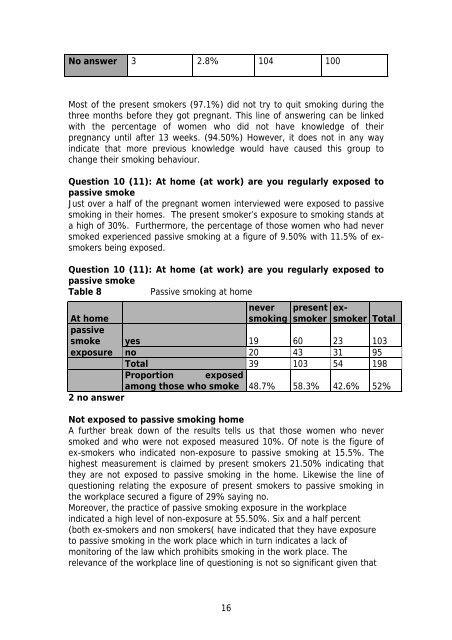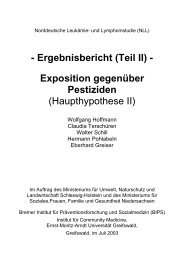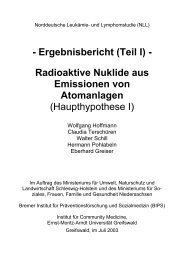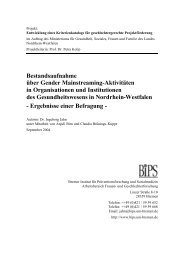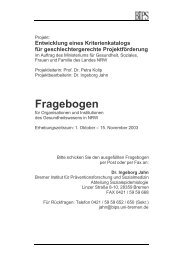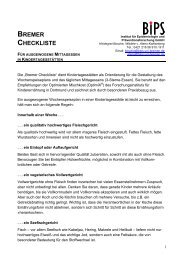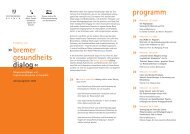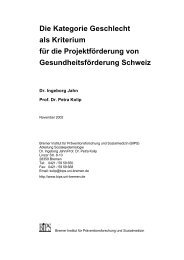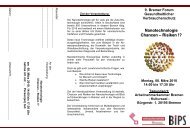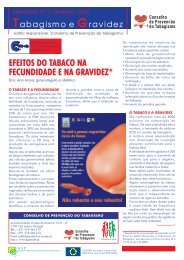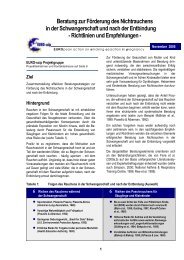Create successful ePaper yourself
Turn your PDF publications into a flip-book with our unique Google optimized e-Paper software.
No answer 3 2.8% 104 100<br />
Most of the present smokers (97.1%) did not try to quit smoking during the<br />
three months before they got pregnant. This line of answering can be linked<br />
with the percentage of women who did not have knowledge of their<br />
pregnancy until after 13 weeks. (94.50%) However, it does not in any way<br />
indicate that more previous knowledge would have caused this group to<br />
change their smoking behaviour.<br />
Question 10 (11): At home (at work) are you regularly exposed to<br />
passive smoke<br />
Just over a half of the pregnant women interviewed were exposed to passive<br />
smoking in their homes. The present smoker’s exposure to smoking stands at<br />
a high of 30%. Furthermore, the percentage of those women who had never<br />
smoked experienced passive smoking at a figure of 9.50% with 11.5% of exsmokers<br />
being exposed.<br />
Question 10 (11): At home (at work) are you regularly exposed to<br />
passive smoke<br />
Table 8 Passive smoking at home<br />
At home<br />
16<br />
never<br />
smoking<br />
present<br />
smoker<br />
exsmoker<br />
Total<br />
passive<br />
smoke yes 19 60 23 103<br />
exposure no 20 43 31 95<br />
Total 39 103 54 198<br />
Proportion exposed<br />
among those who smoke 48.7% 58.3% 42.6% 52%<br />
2 no answer<br />
Not exposed to passive smoking home<br />
A further break down of the results tells us that those women who never<br />
smoked and who were not exposed measured 10%. Of note is the figure of<br />
ex-smokers who indicated non-exposure to passive smoking at 15.5%. The<br />
highest measurement is claimed by present smokers 21.50% indicating that<br />
they are not exposed to passive smoking in the home. Likewise the line of<br />
questioning relating the exposure of present smokers to passive smoking in<br />
the workplace secured a figure of 29% saying no.<br />
Moreover, the practice of passive smoking exposure in the workplace<br />
indicated a high level of non-exposure at 55.50%. Six and a half percent<br />
(both ex-smokers and non smokers( have indicated that they have exposure<br />
to passive smoking in the work place which in turn indicates a lack of<br />
monitoring of the law which prohibits smoking in the work place. The<br />
relevance of the workplace line of questioning is not so significant given that


